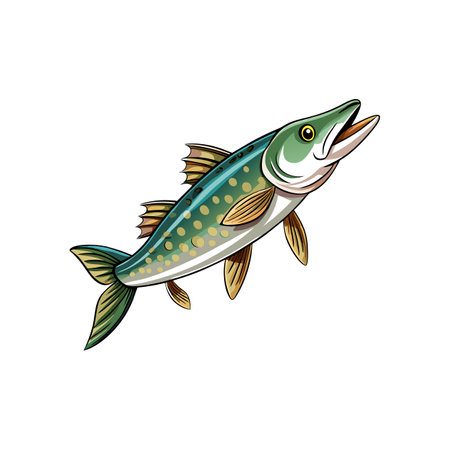Introduction to UK Coastal Drift Fishing
Drift fishing has long been woven into the fabric of Britain’s coastal heritage, quietly underpinning the daily rhythms of seaside towns and villages. This traditional method, which involves allowing nets or lines to move freely with the currents, takes advantage of the dynamic tidal flows surrounding the UK. Over generations, it has earned a reputation not only for its effectiveness but also for its minimal impact on marine habitats. Each stretch of coastline, from Cornwall’s rugged coves to Northumberland’s sweeping sands, brings its own local nuances to the practice—shaped by weather, tides, and the character of the community itself. For many small-scale fishers, drift fishing remains more than just a means to an end; it is an expression of regional identity and resourcefulness, deeply rooted in local history. As we consider the modernisation of this age-old craft, it’s essential first to appreciate its distinctive place within British maritime culture and how it continues to connect people intimately with their natural environment.
2. Adoption of Electronics: Tradition Meets Innovation
The coastline of the United Kingdom is steeped in fishing heritage, with generations of coastal drift fishers mastering tides and currents through instinct and local lore. Yet, as the North Sea and English Channel grow ever busier and environmental pressures mount, British fishers are increasingly blending time-honoured practices with state-of-the-art electronics. This delicate balance between tradition and innovation ensures that their craft remains both sustainable and competitive.
Blending Old and New: Tools of the Trade
Modern coastal drift fishers in the UK now rely on a toolkit that combines classic gear—such as drift nets made to specifications passed down through families—with devices like GPS chartplotters, sonar systems, and electronic logbooks. These advancements allow for greater precision without stripping away the intuitive skills developed over lifetimes at sea.
Key Equipment Comparison
| Traditional Tool | Modern Electronic Equivalent |
|---|---|
| Hand-drawn nautical charts | Digital GPS chartplotter |
| Manual depth sounding (lead line) | Sonar/fish finder systems |
| Logbooks (paper records) | Electronic catch reporting apps |
Sustaining Heritage Amidst Change
Many British skippers are keen to point out that electronics serve as an enhancement rather than a replacement for traditional expertise. For example, a seasoned crew might still judge the best spot to set their nets based on local knowledge of fish behaviour, but now confirm their position or monitor seabed contours using modern tech. This synergy not only improves efficiency but helps maintain a deep-rooted respect for the environment—a value at the heart of UK coastal fishing culture.
Cultural Impact
The thoughtful integration of technology allows younger generations to learn from elders while also contributing fresh ideas. In harbours from Cornwall to Northumberland, you’ll find vessels where both analogue compasses and digital displays sit side by side—a testament to how British coastal drift fishing continues to evolve without losing its soul.

3. Essential Technologies: Tools of the Trade
Modern electronics have become indispensable companions for UK coastal drift fishermen, seamlessly blending tradition with innovation. At the heart of these technological advancements are fish finders, GPS chartplotters, and radio communications—each playing a crucial role in enhancing efficiency and safety along Britain’s rugged coastline.
Fish Finders: Unveiling the Underwater World
Gone are the days of relying solely on local knowledge and gut instinct. Fish finders use sonar technology to provide real-time images of the seabed and fish activity beneath the waves. For coastal drift fishing around the likes of Cornwall or Northumberland, this means fishermen can target shoals with greater precision, reducing time spent searching and minimising environmental disturbance. The ability to distinguish between species and identify underwater features also allows for more sustainable fishing practices, echoing the UK’s commitment to responsible stewardship of its marine habitats.
GPS Chartplotters: Navigational Confidence
Navigating Britain’s ever-changing tides, hidden sandbanks, and rocky outcrops demands accuracy. GPS chartplotters have transformed this aspect of coastal fishing by providing up-to-date mapping, waypoints, and tracking routes. Whether drifting off the Welsh coast or threading through Scottish sea lochs, these devices offer peace of mind—especially in low visibility or inclement weather. The integration of tidal data ensures that fishermen can time their drifts to perfection, capitalising on optimal conditions while avoiding navigational hazards.
Radio Communications: Safety First
No discussion of essential electronics would be complete without mentioning radio communications. VHF radios are a legal requirement for most UK commercial fishing vessels, but they’re just as valued among smaller coastal operators. Reliable communication with harbour authorities, fellow boats, and emergency services is vital in unpredictable British waters. Radios enable swift responses to shifting weather patterns or mechanical issues—a lifeline that has saved countless lives over generations.
Bringing It All Together
The synergy between these technologies empowers UK coastal drift fishermen to operate with confidence and adaptability. By leveraging fish finders, GPS chartplotters, and robust communication systems, today’s crews can make informed decisions that respect both the sea’s bounty and its boundaries—balancing modern efficiency with timeless respect for nature’s rhythms.
4. Sustainability and Conservation Efforts
As the pressures on the UK’s marine ecosystems increase, sustainability has become a defining principle for modern coastal drift fishing. Cutting-edge electronics and technology now play a pivotal role in minimising ecological impact and promoting responsible practices among British fishers. These advancements not only help monitor stock health but also enforce quotas and reduce bycatch, safeguarding the future of coastal fisheries.
Technological Tools for Responsible Fishing
From eco-sounders that identify specific species to real-time catch reporting systems, technology allows skippers to make informed decisions at sea. GPS mapping tools ensure vessels remain within regulated fishing zones, while electronic logbooks provide transparent records for authorities. The table below highlights some of the most impactful innovations:
| Technology | Function | Conservation Benefit |
|---|---|---|
| Eco-sounders & Sonar | Identify fish species & abundance | Reduces bycatch and targets sustainable stocks |
| Electronic Logbooks (e-logs) | Digital record of catch & effort | Improves quota management & traceability |
| Satellite Tracking (VMS/AIS) | Monitors vessel location | Ensures compliance with marine protected areas (MPAs) |
| Onboard Cameras | Records fishing activity | Aids enforcement against illegal discards |
The UK’s Commitment to Marine Protection
The integration of these technologies aligns with national policies such as the UK Fisheries Act and Marine Strategy Framework Directive, both aiming to restore healthy seas by curbing overfishing and habitat degradation. In practice, local initiatives—like Cornwall’s community-led inshore fisheries groups—use data-driven approaches to balance livelihoods with conservation priorities, setting a benchmark for others around Britain’s coastline.
Cultural Shifts in Attitudes
The embrace of modern tech reflects a broader cultural shift among UK coastal communities: from traditional rivalry with regulatory bodies to collaborative stewardship of shared resources. Many younger fishers now see digital monitoring not as an intrusion but as a means of securing their way of life for future generations—a blend of heritage respect and progressive thinking unique to Britain’s shores.
5. Challenges and Cultural Attitudes
Across the windswept harbours and salt-soaked quays of Britain’s coast, the integration of electronics and modern technology into drift fishing has sparked a lively debate. The balance between embracing innovation and honouring time-honoured methods is not simply a matter of practicality; it is deeply woven into the fabric of coastal communities, touching livelihoods, identity, and even the collective memory of place.
Tradition Versus Innovation
For many British fishers, drift fishing is more than just an occupation—it is a way of life passed down through generations. The arrival of technologies like advanced sonar, GPS navigation, and electronic logbooks offers undeniable benefits in efficiency and safety. Yet, these very tools can be seen as double-edged swords. Some fishers express concern that over-reliance on screens and sensors erodes traditional seamanship skills—those learned by reading tides, stars, and local waters with an almost instinctive finesse.
Concerns About Sustainability and Fairness
There is also apprehension about how modern technology might impact fish stocks and fairness among the fleet. Smaller boats or those operated by older skippers may lack the resources to upgrade their gear, potentially widening the gap between large commercial operations and independent day-boats. In tight-knit communities from Cornwall to the North East, this can foster unease about equity and the long-term sustainability of both fisheries and fishing villages themselves.
Cultural Perceptions and Everyday Realities
Attitudes towards new technology are far from uniform. Some younger fishers welcome gadgets as essential tools for survival in a changing seascape—where quotas tighten, weather grows less predictable, and competition intensifies. Others view them with scepticism or even suspicion, mindful of stories where tradition has protected both stock and community resilience. Local pubs echo with stories of “the old ways”—and also with debates about whether technology offers salvation or spells the end of cherished customs.
Navigating Change: Finding a Balance
The challenge lies in finding a respectful middle ground—a way to harness technology without losing touch with heritage. Many UK fishers advocate for practical compromises: using electronics to enhance safety at sea while still teaching apprentices the ancient arts of reading water and sky. This adaptive spirit speaks volumes about the British coastal character: resilient, resourceful, and ever mindful that progress must serve people as well as profit.
6. The Future of Drift Fishing in the UK
Looking ahead, the landscape of UK coastal drift fishing is poised for remarkable transformation as emerging technologies and shifting attitudes shape the industry’s future. Among the most promising trends is the integration of artificial intelligence (AI) into electronic navigation and fish-finding systems. AI-powered devices are likely to become more adept at analysing tidal patterns, water temperatures, and fish migration routes, enabling skippers to make smarter, more sustainable choices while out on British waters.
Another area ripe for development is the adoption of greener energy sources aboard drift fishing vessels. As environmental consciousness deepens across the UK, we can anticipate an uptick in hybrid or fully electric boat engines, alongside solar-powered auxiliary systems for onboard electronics. Such advancements not only reduce carbon footprints but also help preserve the serene natural beauty that defines Britain’s coastal environments.
Connectivity will also play a key role in shaping the next generation of drift fishing. Enhanced satellite communication and real-time data sharing between boats and shore-based support networks promise greater safety and efficiency for crews working along rugged coastlines from Cornwall to Northumberland. With cloud-based logbooks and remote diagnostics for gear and engines, fishermen will be better equipped than ever to respond quickly to changing sea conditions or regulatory requirements.
As new regulations emerge to safeguard marine habitats, modern technology will assist fishers in meeting these standards without compromising their livelihoods. Smart net sensors and automated bycatch reduction devices are already on the horizon, allowing precise targeting of desired species while minimising impact on non-targeted wildlife—a win-win for both commerce and conservation.
Ultimately, the future of UK coastal drift fishing lies in a harmonious blend of time-honoured seamanship and cutting-edge innovation. By embracing responsible tech-driven practices, British fishers can continue to ply their trade with skill and pride, ensuring that both tradition and our precious marine ecosystems are handed down to generations yet to come.

